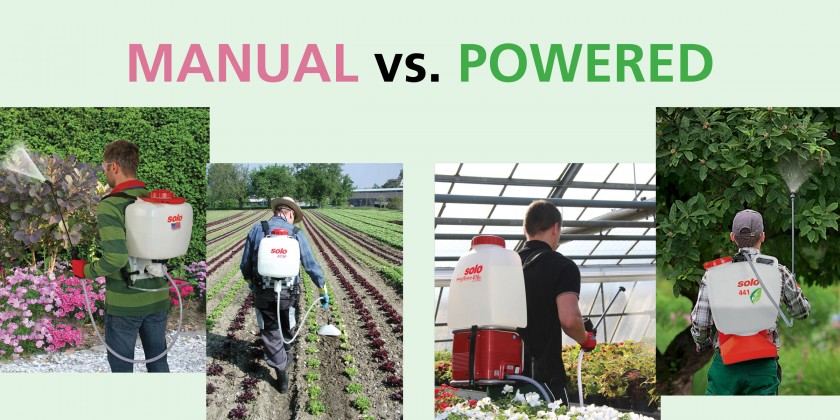
Battery-powered garden sprayers are all the rage in the lawn and landscaping industry right now. Powered garden sprayers can make spraying tasks efficient and less cumbersome than traditional pump sprayers. While battery sprayers have many benefits, they cost more and need to be charged after use.
The appeal of no pumping is strong for many, but pump sprayers still offer many benefits to professionals and homeowners alike. Pump sprayers are cost-effective and ready-to-use without the need to charge. So which backpack sprayer option is better? The answer depends.
MANUAL PUMPS
Manual pump backpack sprayers have two pump types: piston and diaphragm. This is often a point of confusion for customers, as they aren’t exactly sure of the difference between the two pump types. So what’s the difference?
Piston: A piston is a cylindrical pump that moves up and down to create pressure.
● A piston produces up to 90 psi to create a finer mist.
● A piston pump is easier to maintain or repair because it is easier to access the pump.
Diaphragm: A diaphragm pump contains an encased diaphragm that flexes up and down to build pressure.
● A diaphragm pump produces up to 60 psi, for a coarser spray than its piston counterpart. Because a diaphragm pump is a closed system, it is more difficult to maintain or repair.
Solo’s manual pump sprayers: 425, 475, 473-P, 473-D, 435, 485, 430-series, 450-series
Which one should I choose?
Choosing between a diaphragm and piston pump comes down to a few factors. Here is a breakdown of considerations for each pump type.
Piston:
● Piston pump backpack sprayers are compatible with most lawn and garden chemical solutions.
● If you’re spraying liquid herbicides, pesticides, insecticides, or fungicides, pick a piston pump backpack sprayer.
Checklist:
❏ I am mainly spraying liquid herbicides, pesticides, insecticides, or fungicides.
Diaphragm:
● Diaphragm pumps are designed for use with bleach solutions, wettable powders, or water with particles of grit.
● If you’re spraying abrasive liquids, pick a diaphragm backpack sprayer.
Checklist:
❏ I am mainly spraying wettable powders, bleach solutions, or water with particles of grit.
POWERED SPRAYERS
Backpack sprayers can also be powered. Powered backpack sprayers offer many benefits, but the most important benefit is you don’t need to pump a powered backpack sprayer. Powered backpack sprayers have two variations: battery and motorized.
Battery
Battery-powered backpack sprayers are popular because they are easy to use and don’t require the user to pump to pressurize. Users can work with a battery-powered sprayer and spray without pausing to pump for several hours without a charging break. Battery-powered sprayers are available in sizes ranging from one liter to five gallons and are a perfect tool for spraying at home or for your business.
Solo’s battery-powered sprayers: 416-Li, 417-Li, 441, 460-Li
Motorized
Motorized sprayers are designed for spraying at an extremely fine mist at a distance. A motorized sprayer has a 5-gallon tank capacity and is built with a gasoline engine. This sprayer type is generally recommended for professional users.
Solo’s motorized sprayer: 433
Which one is better?
Motorized and battery-powered sprayers serve two different purposes. A motorized backpack sprayer is more than the average homeowner needs, and a battery backpack sprayer is versatile enough for the homeowner or professional.
